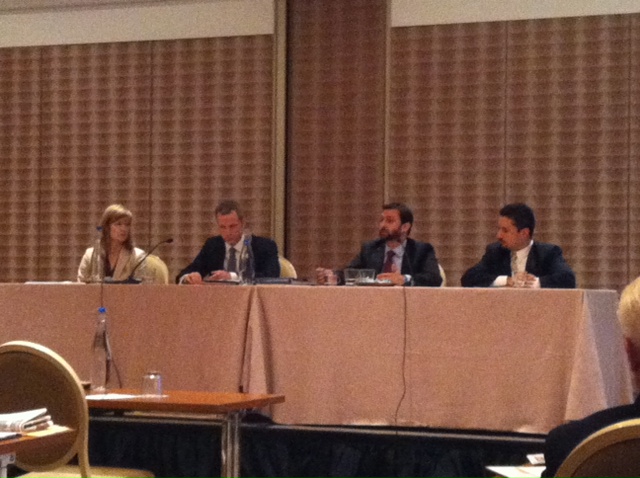At this week’s RIMS on the Hill conference, attendees gathered to hear remarks from a few industry experts regarding the National Flood Insurance Program (NFIP). It has been well publicized how the program has faced major setbacks in recent years. Three noted figures were at RIMS on the Hill to give their take on how to get the program back on track. They were:
Matt Gannon — Assistant vice president of federal affairs for the National Association of Mutual Insurance Companies (NAMIC). He also serves as lead liaison to Capitol Hill on public policy matters impacting his industry and policyholders across the nation.
Joshua Saks — National Wildlife Federation’s Legislative Director, who has helped set strategy and coordinate outreach to members of Congress on key campaign priorities, including clean water and wetlands issues, energy policy, deferral appropriations for wildlife conservation and protection of public lands in Alaska and the Rocky Mountain west.
Austin Perez — A senior policy analyst with the National Association of REALTORS, where his subject matter expertise ranges from property rights and land use to energy and environmental issues. Long-term flood insurance reauthorization and reform has been his chief focus and an association top priority.
Matt – “The NFIP is vitally important to our nation — it’s something that affects us all. We are seeking to improve a government program and also hoping to preserve it. The NFIP has accrued a significant amount of debt as result of the 2005 storm season. In part because of one of the major flaws in the program — they don’t take into account risk. What we’re looking for is primarily to ensure that the NFIP is reformed so that it reflects a private insurance model.
One fundamental deficiency is that no one is making sure flood insurance plans don’t lapse.
Congress has made a lot of progress — there was HR 1309 — but short-term authorizations, as well as lapses, are significant disruptions to the marketplace. Mandatory purchase should be enforced wherever possible. What we wanted to do [with “flood the Hill“] was to replicate the noise that Congress hears after a lapse. We want to get all the groups calling for flood insurance reform to call Congress. We’re not going to let our foot off the gas. We want [the Senate] to move forward with comprehensive reform.”
Josh – “Flood plains are tremendous areas for many things. They are recreation areas — our members benefit from them. Those areas allow groundwater recharge. They act as buffers when there is pollution since they stop pollution from entering waterways. They’re also habitats for wild animals and endangered species. And the best benefit — naturally functioning flood plains, which are the best flood prevention method money can buy.
[The National Wildlife Federation] believes in holistic management of a flood plain. We need to take into account altered hydrology, more severe weather, more storm frequency, etc.”
Austin – “The only way you can get major reform in this town is to get everyone going the same direction — the realtor group, the insurers, everyone. They key point here is that there is no group out there that is not pushing for this. We’re all in favor of a 5-year reauthorization — that’s the first step.
This is the 18th extension of NFIP since 2008*.
We have home buyers who may want to buy but don’t know if they’re in a flood zone and they don’t know whether or not there is going to be flood insurance. This economy relies on real estate transactions. This is an economy where we want to move as many transactions as possible, but we can’t without a flood insurance program reform. We need an accurate set of flood plain maps. We don’t think its fair for homeowners to get a notice saying they need flood insurance if they’re not really in a flood plain. Put the senators on the spot and ask, ‘Are you with us?'”
*According to calculations from the National Association of REALTORS


